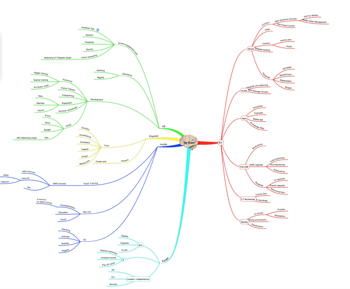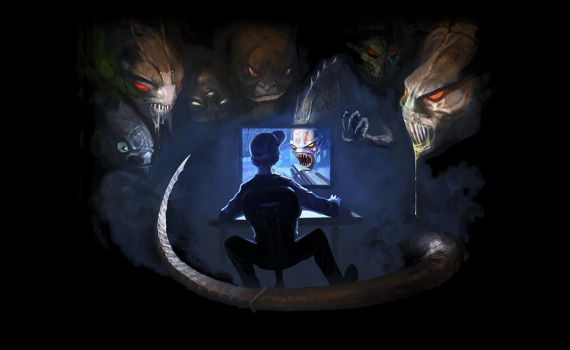How can I be really productive?
I was told long ago that I need to choose how I spend the time I have available to me…
My martial arts teacher and mentor Sifu John Hine, drilled into me that “You can achieve anything you want with discipline and order!” He is very successful, and I credit him with taking someone with little drive or initiative, pointing me in the right direction, and giving me many of the tools to progress.
While this mantra is both simple and true, it’s not always easy to do and we often need to build systems to be disciplined and ordered with. This article covers my search for a system that would work for me. Time is our most important asset, how will we spend it? I constantly find myself falling back on social convention and being driven by requests from others. Accepting all meeting requests, taking all actions passed to me and generally being very helpful and a good corporate citizen.
This does mean though, that my time is then 100% managed by the demands of others and I cease to actually become productive.
Over the last few years I have had to constantly remind myself that if I want to be creative, innovative and productive I need to choose how I spend the time I have available to me.
I need to have a good plan and stick to it!
There are all sorts of productivity systems out there to manage the tasks we have and I do use a few myself, things like GTD for example. What is not so clearly defined is what tasks you should prioritise over other tasks. However pretty much everyone recognises that to get anywhere you need directions and therefore a goal
##Goals! For goal setting I start with a mind map. I was also introduced to these by Sifu Hine and have been using them since the late 1980’s. Back then they weren’t beautifully drawn, or anything really more than a “spider chart” but they did (and still do) help me to structure and organise my thinking.

I used them extensively to help organise then memorise the revision for my M.Sc examinations. Those ones I spent a bit more time on as I was looking at them a lot and needed to recall the visuals to help remember the technical subject matter. As soon as I could justify the price I splashed out on a copy of Mindjet’s mind mapping software - at that time the only software available and very expensive! Nowadays I mainly use MyThoughts on Mac or iThoughts on iOS.
For goal setting I create a branch for each area of my life or major project as a root branch and I fill out what I want to achieve. I can then reorganise it and boil it down into a 12 month set of goals.
This year I tried a different way and did a big brain dump into a mind map of everything I was working on, planning, and was generally on my mind. I then showed it to my girlfriend who asked me how I was still sane, and after a pause, asked if I was actually still sane!
Once I know what I want to achieve I’ve then got to figure out how to achieve it, each bigger goal is broken down into a series of steps. I then need to set deadlines as to when I will achieve each major step.
This all probably seems very familiar so far right? Ever since the book “What they don’t teach you at Harvard Business School” by Mark McCormack, where he related the 1979 study on goal setting amongst Harvard MBA students.
In that year, the students were asked, “Have you set clear, written goals for your future and made plans to accomplish them?” Only three percent of the graduates had written goals and plans; 13 percent had goals, but they were not in writing; and a whopping 84 percent had no specific goals at all.
Ten years later, the members of the class were interviewed again, and the findings, while somewhat predictable, were nonetheless astonishing. The 13 percent of the class who had goals were earning, on average, twice as much as the 84 percent who had no goals at all. And what about the three percent who had clear, written goals? They were earning, on average, ten times as much as the other 97 percent put together.
##How to spend my time wisely The problem for me hasn’t been deciding what to do but how not to get distracted and stay on course. I have many great opportunities that come my way, infinite things I could spend time on and lots of people who want me to do things. In the corporate world there is a massive overhead on administration and the more you move up in middle management the more admin and dreadful admin systems you are forced to use. Fortunately in my personal projects and businesses I have a much larger say in the processes we use.
I have 3 ways I use to make these decisions:
- Lowering the noise
- Agile Results
- GTD
##Lowering the noise Extracting a good signal from all the background noise is easier if you can reduce the volume of the noise.
I have managed to lower noise as much as possible by delegating or outsourcing where I can and maintaining good communications to know when I need to handle something.
Email is the biggest time sink in any business and good filters and the use of inbox zero is critical to ensure all my time isn’t spent reading the latest round of jokes, spam or mailing lists unless I want to. I’m pretty diligent about keeping this area of my life under control although last weeks count of around 200 emails in my inbox that weren’t automatically filed in a day says I may need to revisit this again.
###Inbox Zero Inbox zero is an email management and sanity reclamation technique dreamed up by Merlin Mann in 2006 this is a quote from his introductory post on 43Folders
“Clearly, the problem of email overload is taking a toll on all our time, productivity, and sanity, mainly because most of us lack a cohesive system for processing our messages and converting them into appropriate actions as quickly as possible.”
You can read more about Inbox Zero here
##Agile Results Agile results is a system by JD Meier, a program manager at Microsoft. He has a book and website for further reading.
I’ve been implementing this system bit by bit and reviewing it every month to see what works well and have been using it since January. I’ll eventually do a write up on how I have been using Agile Results, but I think I can over simplify it in the following way.
Boil your yearly goals down into 3 main goals, plan the steps to achieve those goals into 3 goals for each month, then 3 goals for each week and finally 3 goals for each day.
Each day I will decide based on my annual/monthly/weekly goals plus what is outstanding on my task list and make my goals for the day, if I achieve those then I can always add more but these are the op 3 things I must achieve today.
At the end of each day I review and replay for the next day and do the same at the end of each week.
There is a lot more to it than that but I have found that the power of threes is magic!
##GTD Getting Things Done, David Allen’s famous system for productivity This is a brilliant innovation as it removes the need to keep everything in your mind and offloads it all onto a “trusted system” which then gives you your tasks as you need them. I’m sure that without that “trusted system” that I can rely on not to forget things, and only to show me the things I need to do right now I would have definitely lost the last vestiges of my sanity!
The backbone of the system for me is Omnifocus, which I have on my laptop and on my mobile devices. I also use all sorts of shortcuts to get tasks into the system, such as key shortcuts to clip texts or copy emails, and just being able to forward emails with attachments has also been a big benefit.
My Calendar is also a big component of how I schedule my day, as I block time out for some tasks to make sure I reserve a slot specifically for them so nothing else can get booked in and ruin my flow.
##A final note This is a constantly evolving system that has an overhead of it’s own but I think the cure is much better than the disease. This may not work for anyone other than me but I think that if I’m constantly trying to tune the systems on which my work is based with a focus towards greater productivity, this then allows me space for creativity and innovation and gives me a better quality of life. If so then I’ll still be heading in the right direction.
This was written with a view of the MGM Grand and the rest of the strip out of the window while listening to David Bowie’s Hunky Dory album. It’s 6am in Las Vegas and I’m feeling that quality of life right now!
